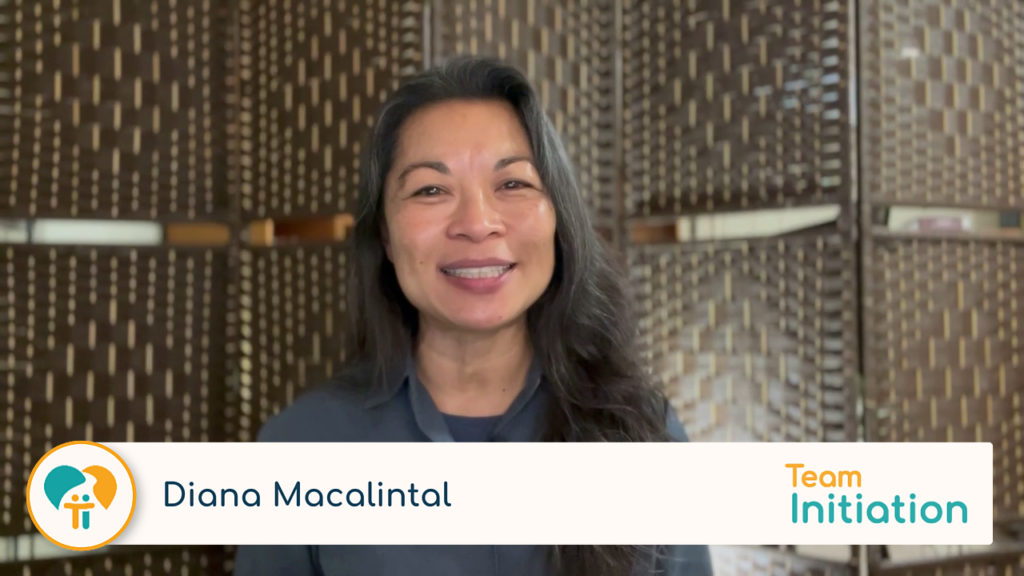
“Why can’t we use Year B readings this year for the Scrutinies?”
“The assembly is missing out on hearing the readings for Year C. How come we always have to do Year A at the Scrutinies?”
“We’ve written new scrutiny rites for the Year B readings. Can we use those?”
I hear those questions every year we aren’t in the Year A cycle of the Lectionary. (Recall that the readings we hear every Sunday are structured on a three-year rotation. In Year A we hear primarily from Matthew’s Gospel; in Year B, from Mark; and in Year C, from Luke. John’s Gospel is interspersed throughout each year.)
I can understand why some people have these questions. We’ve come a long way since before Vatican II when the amount of Scripture people heard at Mass over the course of a year was very limited (1% of the Old Testament and 17% of the New Testament) compared to today (14% of the Old Testament and 71% of the New Testament). When the Constitution on the Sacred Liturgy, 51, of Vatican II said that “[t]he treasures of the bible are to be opened up more lavishly, so that richer fare may be provided for the faithful at the table of God’s word,” the Church took it seriously, and the faithful have come to value more and more a fuller proclamation of the Word in the midst of the assembly.
Yet I think we still have a ways to go when it comes to valuing the rites of initiation within the Sunday gathering of the assembly. The best way we can help the assembly—and their parish leaders—to grow in appreciation of these rites of initiation is to do the rites well and fully, consistently year after year.
What does the Rite say?
So, taking a look at the rubrics for the Scrutiny Rites, we read:
The scrutinies should take place within the ritual Masses “Christian Initiation: The Scrutinies,” which are celebrated on the Third, Fourth, and Fifth Sundays of Lent; the readings with their chants are those given for those Sundays in the Lectionary for Mass, Year A. In every case the ritual Masses “Christian Initiation: The Scrutinies” are celebrated and in this sequence: for the first scrutiny the Mass with the gospel of the Samaritan woman; for the second, the Mass with the gospel of the man born blind; for the third, the Mass with the gospel of Lazarus. (146)
Seems clear, yes? Yet perhaps still not compelling enough a reason for those who ask our opening questions. So let’s look at some reasons that may be more convincing.
What does history say?
In the oldest known Book of Gospels, called the Würzberg Evangelary (c. 645), the three passages from John’s Gospel listed in RCIA, 146, are included in the readings for Lent. This Evangelary scheduled John’s Gospel to be read semi-continuously during the last few weeks of Lent. However the stories of the man born blind and the raising of Lazarus were listed out of order, suggesting that they were used for specific rites. By the ninth century and possibly as early as the late seventh century, we have evidence that these three Gospel readings were moved to specific Sundays of Lent in both the Roman rite and the Ambrosian rite, again suggesting that they were used for particular lenten rites. We can trust that for the Church, these Johannine stories have had significant prominence in the preparation for Easter. Let’s examine why this is and why over the years these readings have been associated with the preparation of the elect.
What do the readings say?
Just as the scrutinies themselves are meant to be a series of rites spanning over an extended period of time, so too are these three Gospel readings meant to be “digested” little by little with time in between each set of readings. This is because the readings in their assigned sequence reflect the very purpose of the Scrutiny Rites. That is, little by little, these readings with their prescribed rites uncover what is weak and sinful and strengthen what is good and upright in the elect. Through them, “the elect are instructed gradually about the mystery of sin, from which the whole world and every person longs to be delivered…” (RCIA, 143).
In the story of the woman at the well, the Samaritan woman hears Jesus then goes and tells the villagers what she has heard, causing them to seek him out for themselves. The reading ends with the villagers saying to the woman, “We no longer believe because of your word; for we have heard for ourselves, and we know that this is truly the savior of the world” (John 4:42). Was this not the starting point of every elect? They heard a word, a word that they discovered over time to be Christ. Upon discovering who was speaking to them, they no longer believed because of hearsay, obligation, or pressure, but because they heard Christ’s voice for themselves.
In the story of the man born blind, the man healed of his blindness gradually grows to see as Christ sees. He regains his sight right at the start of the story. But only because of the interrogation he receives from his neighbors and the Pharisees and his struggle to respond to them faithfully, does he little by little begin to see the identity of who it was who healed him. By the end of the story, the one who healed him was no longer to him just “the man called Jesus” (John 9:11) or simply “a prophet” (John 9:17) or “from God” (John 9:33). He was “Lord” (John 9:38) in whom he believed. For the elect this progression may be familiar. At the start of their catechumenate, their eyes are signed “that [they] may see the glory of God” (Rite of Acceptance, RCIA 56). Through their catechesis over the years and their experience with the community of believers they grow in understanding of what they see—who the man Jesus was, the prophetic words he spoke, his unique relationship with the Father, and finally his true identity as Lord.
Lastly, in the story of the raising of Lazarus, we come to the final days before the elect must stand before the font and profess their faith. In this reading, the miracle happens at the end of the story, but faith is already expressed long before the miracle takes place. Martha makes her profession of faith in Jesus the Messiah even as her brother is lying dead in the tomb. She needed no words and no miraculous deeds to believe in him; she only needed to believe. Period.
In this final story, we see what those who have been entrusted to continue Jesus’ work have hopefully been doing in order to prepare the elect to make their profession of faith. They have been preparing them, like Jesus prepared Martha and Mary, to understand the paschal mystery they would witness in the resurrection—that out of death comes new life in Christ. Only after Lazarus is revived and Jesus is raised from the dead will Martha truly understand the words of faith she professed. It is her belief in and love for Jesus that allow her to be ready for whatever he will do despite her human logic that death is death, for “Martha believes not in what she understands but in the one who has the words of eternal life” (Sandra Schneiders, Written That You May Believe, Crossroad Publishing Company, p. 158).
When the three scrutiny readings are examined in this way, we begin to understand what the RCIA means when it says that Lent “is intended as well to enlighten the minds and hearts of the elect with a deeper knowledge of Christ the Savior” (139). The Gospels assigned to the scrutinies are there to ask the elect:
- Could he possibly be the Messiah?
- Do you believe in the Son of Man?
- Do you believe this?
The things that keep the elect from saying “yes!” are the things that must be scrutinized and exorcized, for in a few short weeks, they must respond “yes, I believe” as they stand at the edge of death at the font. The place where the elect learn to answer “yes!” is in the parish community. The assignment and order of the scrutiny Gospels from John reflect the community’s progressive and communal catechesis for the elect in order that they may hear and believe (Samaritan woman), see and believe (man born blind), and finally believe without proof (Martha and Lazarus).
Why B and C don’t work
Though well-intentioned and creative, when we create new scrutiny texts to match the readings from Year B or C, we have severed ourselves and our elect from the rich history and wisdom of the Church who over the centuries have understood the unique power of the three Johannine Gospel readings. Some will argue that the Year B readings are particularly apt for those preparing for baptism because each Sunday reading includes reference to some symbol from the baptismal rite: water in Noah and the flood; white garments in the Transfiguration; resurrection of the destroyed temple; Jesus teaching Nicodemus about the light; and death of the grain of wheat. Although this may be true, these readings cannot compare to the dramatic power of the three assigned Scrutiny readings. Furthermore, as RCIA 143 noted, Lent is a time for the elect to gradually learn about sin; the period after their baptism is the time for them to reflect on the baptismal symbols and their experience of initiation through mystagogical catechesis.
New scrutiny texts for Year B or C sever us from the rich history and wisdom of the Church.
When we worry that the faithful are missing out on the readings of Year B or C on the Sundays of the scrutinies, we are forgetting that the faithful’s role in these rites is to pray fervently for the elect. All their focus should be upon the elect for it is in them that God is working most clearly. It is in the elect that the Word of Christ is evangelizing whole communities; it is in them that the world is beginning to see Christ present on earth; it is in them that we will witness new life spring forth from death. These elect will be elect only once in their lives. This will be the only time they will ever hear these three Gospel readings from John as elect, surrounded by the prayers of the community and overshadowed by the power of the Spirit. We, the baptized, have a responsibility to them at these critical moments of their lenten preparation to use the best our Church tradition has to offer. The best will be the assigned Year A readings.
If you would like to learn more about how to celebrate the RCIA scrutinies, view the recording of our online workshop during which Diana Macalintal and Nick Wagner covered the essential do’s and don’ts for an awesome celebration. Click here for more information.
Perhaps as preparation for taking on our assigned role in these Scrutiny Rites, we, the already-baptized, might read the assigned readings for Year B or Year C during the weeks leading up to the Scrutiny Rites, that these readings might open our ears, eyes, and hearts to hear the Year A readings anew with strengthened faith in Christ already at work in the elect.











Wow! I hear this question all the time and am very grateful for the response from the professionals in our field. I think the person who wrote and asked this question should have consulted someone before they “rewrote” the ritual.I’m sure many of us have thought about this too but we decided to hold fast to the ritual as we have found the Church has much more wisdom than we do.
Thanks Jeanne, I’m glad it was helpful. And thanks for all the great work you do in this ministry!
–Nick
I’m going to forward this to my Pastor. He insists that we do the rituals and use the readings for the A, B or C readings, because he says the people expect and prepare for the year we are in because they ‘all use the missallettes’ argh!…I tell him that the prayers of the rite don’t make sense and neither do the actions if you use the readings from B or C. Plus, the missallettes have the year A readings in them every year!!
Thanks, Nick!
Terrific Michele! Also, be sure to check out our podcast on the same subject:
https://teaminitiation.com/2013/01/13/readings-for-the-rcia-scrutinies/
–Nick
oops- and Diana! 🙂
I am printing this article for our priests.
Every year, our priests would initially argue against using Cycle A of the readings for the Scrutinies. Their reason is the same – people don’t get to hear Cycle B and C plus they didn’t want to prepare two homilies. Well, the two previous priests that we had did not mind preparing two homilies I guess after much thought and prayer. We have two new priests from the Philippines where there is no RCIA. After some discussions at our last staff meeting, the parish administrator decided that he would do all the Scrutinies using Cycle A while the other priest will celebrate all the other Masses using Cycle C readings.
Keep up the great work Julia! Thanks for letting us know the post was helpful.
–Nick